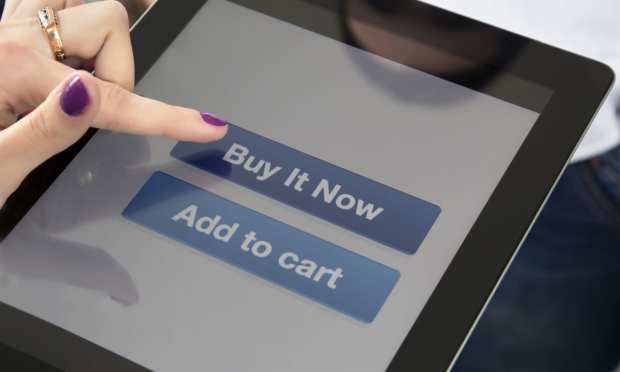Buy Buttons Press The Need For Faster Checkout Experiences Online

Some ideas just sell themselves. Take the “buy button.” Hear that and you instantly get it. And ongoing PYMNTS research into buy button adoption reveals telling new trendlines.
“Buy buttons emerged in 2020 as a powerful industry-wide rebuke to the relentless drag of a tanking economy: Shorter checkout times and simple, secure payment processes helped boost eCommerce futures for retailers on and off Wall Street,” according to PYMNTS February 2021 Buy Button Report: Optimizing Payment Choice For Digital-First Consumers.
Per the latest report, “Retailers saw what analysts and consumers saw in buy buttons: a frictionless checkout process that made online shopping more appealing at a time when little else online brought joy. In 2020, buy buttons meaningfully improved consumer experiences, providing a rare bright spot in an industry desperate for good news.”

Buy Buttons As Data-Driven Strategy
As a click-to-purchase payment innovation shown to cut checkout times by up to 50 percent, the buy button is the talk of the town, you might say. Everyone’s getting in on it.
Surveying over 800 companies across 17 categories, the new Buy Button Report found that the share of merchants integrating buy buttons leapt to 76 percent in 2020, a historic high.
“Retailers increased their adoption of buy buttons at the height of the pandemic, despite massive retail sales declines,” per the Report. “This was not a last-ditch effort by retailers to turn their luck but rather a data-driven strategy. Buy buttons became a virtual tether to solvency for retailers: As eCommerce earnings rose, merchants capable of removing friction at checkout remained afloat amid the uncertainty.”
Comparing the average checkout time of two minutes and 56 seconds for shoppers not using buy buttons to the one minute and 39 seconds of those that do, the strategy clarifies greatly.
PYMNTS researchers found, “PayPal was offered by 73 percent of merchants, but it has experienced less than 3 percent growth in adoption since the beginning of 2020. Google Pay adoption … increased to 10 percent, whereas Apple Pay grew to 6 percent on eCommerce sites. PayPal may lead the pack when it comes to adoption, but Google Pay and Apple Pay are rapidly gaining competitive strength. Google Pay and Apple Pay still have enormous adoption gaps to overcome if they are to present a serious challenge to PayPal’s dominance.”

In The Meantime, Streamline
Speed, convenience and safety are more or less tied in a three-way race for the best consumer experience. Buy buttons can be clearly quantified as impacting experience positively.
Per the new Buy Button Report, “Approximately 60 percent of websites that we surveyed offer streamlined guest checkouts, allowing shoppers to pay using a buy button, an increase of 10 percent from Q1 2020. Guest checkouts that allowed customers to pay using a buy button were 22 percent faster than those requiring a shopper to create a profile before purchase using a buy button (one minute and 34 seconds versus two minutes).”
Time and effort efficiencies like that are catapulting buy button popularity as eCommerce becomes a dominant channel and shoppers encounter this feature in more settings.
Checkout time reductions are rightly seen as pivotal in lowering cart abandonment and creating the seamless shopping journeys that consumers expect and demand. Within some verticals — such as jewelry and home décor — buy buttons are transforming eCommerce conversions by conserving the most valuable thing of all: time.

